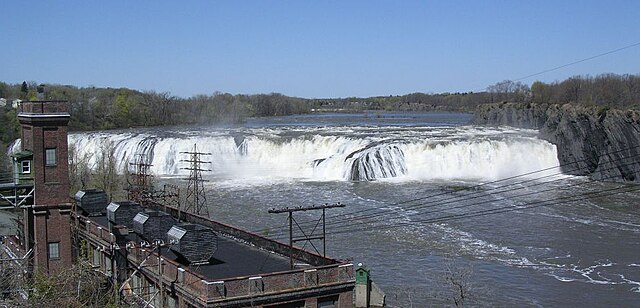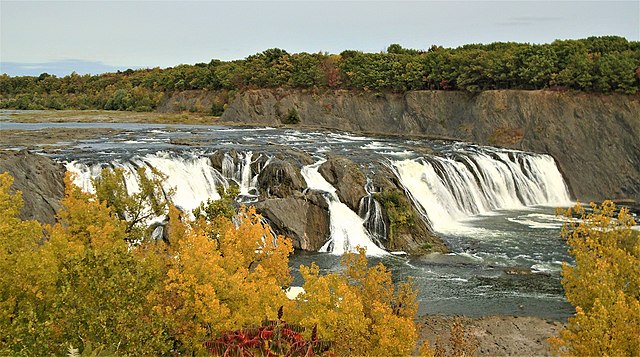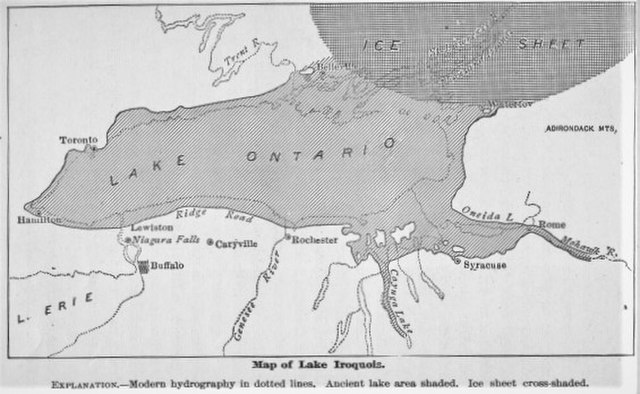Cohoes Falls [Kahón:ios Kanien'ké:ha for "a boat is in the water / is actively submerged"] is a waterfall on the Mohawk River shared by the city of Cohoes and the town of Waterford, New York.
from the south
Early illustration (1772) of Kohoes Falls, from the book En Resa til Norra America by Pehr Kalm.
Cohoes Falls in spring with high volume of water
Cohoes Falls with low water flow
The Mohawk River is a 149-mile-long (240 km) river in the U.S. state of New York. It is the largest tributary of the Hudson River. The Mohawk flows into the Hudson in Cohoes, New York, a few miles north of the state capital of Albany. The river is named for the Mohawk Nation of the Iroquois Confederacy. A major waterway, in the early 19th century, the river's east-west valley provided the setting and water for development of the Erie Canal, as a key to developing New York. The largest tributary, the Schoharie Creek, accounts for over one quarter (26.83%) of the Mohawk River's watershed. Another main tributary is the West Canada Creek, which makes up for 16.33% of the Mohawk's watershed.
Cohoes Falls, near the eastern end of the Mohawk River in Cohoes, New York
Mohawk River at confluence of South Chuctanunda Creek
As the Laurentian Glacier retreated, it blocked the outflow of Glacial Lake Iroquois. Instead of flowing down the St Lawrence Valley it flowed down the Mohawk River.
The Mohawk Valley (center-right), runs east and west, cutting a natural path between the Catskill Mountains to the south and the Adirondack Mountains to the north.








